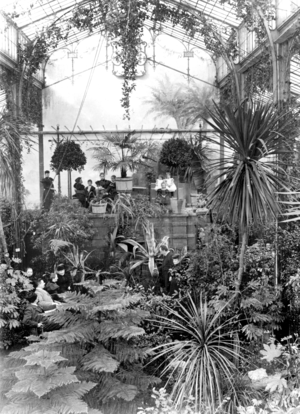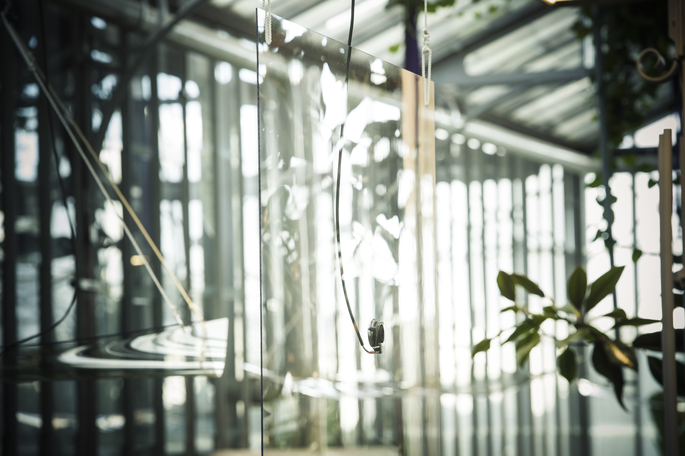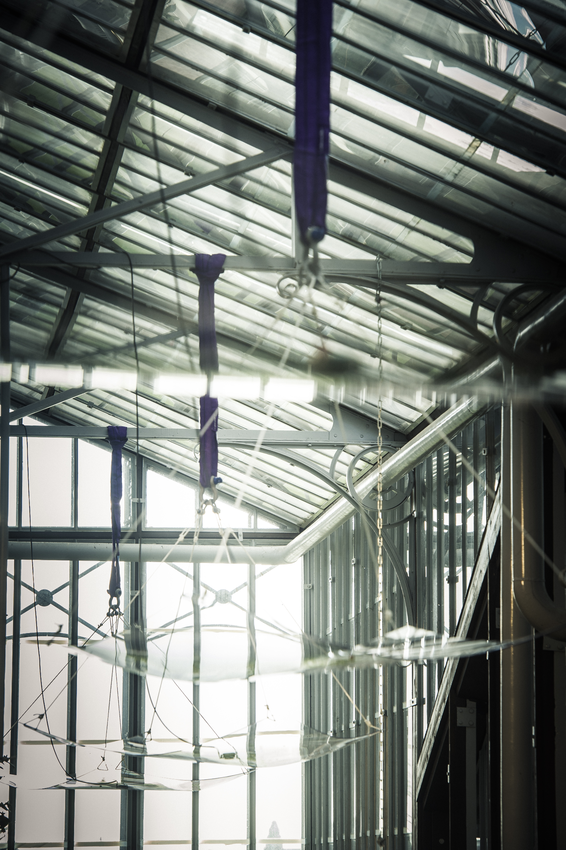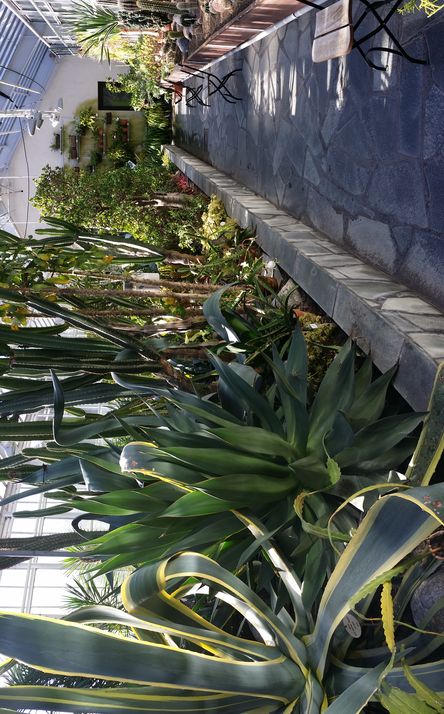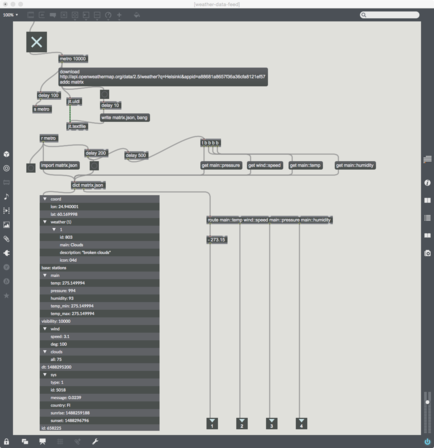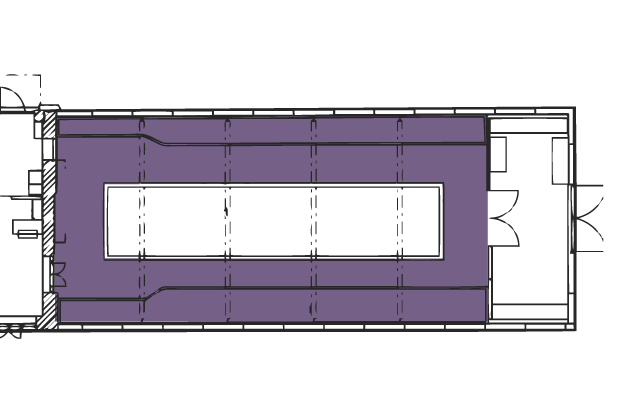Talvipuutarha — The Helsinki City Winter Garden — is a Nordic echo of the steel and glass greenhouses that started appearing in European cities during the latter half of the nineteenth century. The building was designed by the architect Karl Gustaf Nyström and opened to the public in 1893. The construction work was financed by Jakob Julius af Lindfors, an important Finnish nobleman and philanthropist. Lindfors donated the building to Helsinki City in his will, on the condition that it would remain open for all, without an entry fee. These terms have been respected up to the present day.
The ensemble of late nineteenth century urban greenhouses emerged from a newly industrial society. Industrialisation provoked a flow of workers to cities, where green areas gradually shrank under rampant construction. The ideals of that time held that access to nature was central to the wellbeing of workers, motivating capital-holders to invest in spectacular buildings where one could comfortably admire the luxurious greenery regardless of the season and the weather. [1] Although, in the Finnish context, the rationale for constructing a green oasis within the city is less connected with rampant urbanisation than with the climate, which deprives the population of greenery for six months every year. In the year 1900, the population of Helsinki was just below 100,000, making it a small Nordic city with access to forest vistas, the Baltic, and its archipelago, all of which offered city residents easy access to greenery in summer season. The name Talvipuutarha (winter garden) reflects this seasonality, and the greenhouse is still one of the few places offering the spectacle of living greenery during the winter months in Helsinki.
At the same time, the ethereal steel and glass constructions were remarkable achievements in construction. At the forefront of architecture, the greenhouse heralded positivist modernity, its glass demonstrating light and aeriality following on from Europe’s long-held tradition of lancet and rose windows. [2]
The societal transformation from an agrarian society to an industrial one was also reflected on the greenhouse aesthetics. The glass structure framed the vegetation as an object of contemplation. The greenhouse acted as a three-dimensional and multisensory symbol of Eden, yet an Eden under human control, where an aesthetic regime could be consumed as a cultural artefact. [1]
But Nature is so uncomfortable. Grass is hard and dumpy and damp, and full of dreadful black insects. Why, even Morris' poorest workman could make you a more comfortable seat than the whole of Nature can. […] If Nature had been comfortable, mankind would never have invented architecture, and I prefer houses to the open air. In a house we all feel of the proper proportions. Everything is subordinated to us, fashioned for our use and our pleasure. [3]
The era of Europe’s urban greenhouse construction coincided with the height of colonialism, and the bold glass structures were employed as a vitrine magnifying the colonialist discourse and programme. They were an instrument advertising imperialist expansion and a means to recruit new colonists. London’s famous Crystal Palace, originally built for the Great Exhibition of 1851, saw its second coming as the stage for the 1911 Festival of Empire. The festival staged a celebration of the British Empire at its paramount moment, combining the forces of worldwide European domination, positivist ideology, and global capitalism. [4] [5]
The construction of Helsinki’s Talvipuutarha followed the metropolitan fashion, but in a way particular to the Finnish context and its colonialist ideologies. By the time of Talvipuutarha’s construction in 1893, Finland was a western province of the Russian Empire and had never been independent; rather it was a disputed frontier zone between the Russian and the Swedish regional superpowers. Even if Finnish national romanticism had been gaining momentum through the 19th century, the local situation was one where Helsinki was a colonised city rather than the seat of colonial power. The contemporary perception of Talvipuutarha reflects this aspect of Finland’s history: in general, the greenhouse’s collection of plants does not refer to a specific land, region, culture or country. Rather, they form a botanical catalogue that evokes a vague exoticism and a comforting source of greenery during the winter. However, one notable exception exists: Talvipuutarha’s oldest and most famous plant is a century-old camellia donated by Aurora Karamzin, an eminent lady from the Tsar’s court. Through this camellia, Talvipuutarha still bears the memory of the Imperial Russian era in Finland. The greenhouse thus reflects a specific setting where a symbol of southern hemisphere colonialism was erected in a colonised northern territory.
A greenhouse is a man-made delimited space housing an artificial and not self-sustainable ecosystem — like a cocoon or a womb — in which a display of nature is nurtured, tended to, and cared for by full-time professional personnel.
Inside the greenhouse: a warm, humid atmosphere. Luxurious and exotic plant life and sounds of water. Endless immaculate plant details sit together with human craftsmanship. An immersion into a delimited, multisensorial ‘elsewhere’.
Outside the greenhouse: the city, urban skyline. The elements: snow, rain, wind, a wide sky stretching beyond limits. A distant echo of traffic noise. People going about their daily businesses.
A thin glass wall separates the inside and the outside, staging a peculiar perceptive boundary.
Within the visual modality, the greenhouse’s transparency is continuity. The gaze travels unhindered between the inside of Eden and the outside of ‘reality’.
For the olfactory sense, the glass is a strict barrier. Distinct atmospheres reign inside and outside the greenhouse.
For tactile perception, the greenhouse is an enclosure. The body is immersed in a bubble of humidity and warmth, contrasting with the outside elements sealed away on the other side of the glass. Inside the greenhouse, the possibilities of movement and embodied action are strictly delimited by walkways and fences, as well as by the social contract of behaviour in a public museum-like space.
Within the aural modality, the greenhouse structure is a filter. Sounds from the outside are transmitted through the glass as a muffled, disorganised, and non-localised aural impression. The greenhouse's aurality contributes to the spatial delimitation. Sounds from the surrounding world are perceptible, but clearly emanate from outside.
The greenhouse presents a multifaceted perceptual boundary condition, functioning at the same time as a barrier, continuity, enclosure, and filter.
Implementing an audio work in a site like Talvipuutarha faces the challenge of its rich historical context, provoking the question: what happens when a contemporary audio work is implemented in a historical, unique, iconic and socially complex site?
As a site for aural work, Talvipuutarha is charged with context. The historical underpinnings point to the representation of colonialism within the Russian Imperial context (see left, ‘Theatre of Nature and Colonial Reflections’). A contemporary reading of the greenhouse directly evokes global warming and the greenhouse effect. From the onset of the work, Lähdeoja and Moreno took a common decision to not steer the piece towards environmental art, which would have restricted the piece to a specific message, association, or pre-conceived sociopolitical thought. Instead, the composers wanted to work with the medium itself: sound, glass, and the situated location in a historical and iconic context. The desire was to not let contextual discourse override the essence of the work: the sonic craft. This left the space of associations open for the visitor. The sound work left open the possibility of reflection on the greenhouse’s contemporary symbolic meanings, but it could also be taken as an abstract piece centered on percepts within the complex boundary condition that the glass building offers (see left, ‘Transparency as a Perceptual Boundary Condition’). For the composers, it was essential to not colonise the space with a specific conceptual agenda beyond the sound work itself, and thus allow the space to breathe its own layers of meaning into the work. For the artists, the absence of sociopolitical agenda signified respect for this particular site, its inhabitants both human and botanical, its history, as well as its everyday visitors.
By design, IN SITU: Sonic Greenhouse deliberately embraces transparency as its founding metaphor. The piece’s audio transducer technology is mounted directly on the glass walls, fusing with the building’s structure. The building becomes a resonating instrument or, inversely, the sound becomes part of the transparent architecture. Visually, the transducers are small and merge into the environment without obstructing visibility through the glass walls. Careful exploration of the site, its atmosphere, social life, plant life, visitors, and staff was conducted before the design process was begun. We wished to comprehend the site in all its complexity prior to the actual composition work, in order to ensure that the sound would bring a pertinent novel sensorial dimension to the site.
Beyond the acoustic activation of the glass walls, three additional artistic devices emphasising the transparency theme were created.
1) Suspended plexiglass panels, both vertical and horizontal, serving as additional transparent sounding elements, were distributed in the higher parts of the Palm Room.
2) Inverted glass flower pots, containing a small loudspeaker, were placed on the ground, acting as a sound source for sonic acupuncture, as well as a visual metaphor for the whole work in miniature size: sound contained in glass.
3) Weather data was fed into the computer sound engine. In order to connect the sounds inside the greenhouse to the outside conditions visible through the glass walls, we implemented a network-based weather data feed into the generative granular synthesis sound engine used in the Cactus Room. By connecting the outside conditions to the sound engine, we envisioned finding a way around the greenhouse’s boundary condition. As a result, we obtained a perpetually varying generative sound structure tightly related to the atmosphere inside as well as outside the room. A detailed technical presentation and analysis of Sonic Greenhouse have been presented at the Sound and Music Computing Conference 2017. [6]
The experiential result of the work is one of transfiguration. The greenhouse’s glass shell is activated with sound, provoking a percept of sonic radiation through the windows — as if the sound co-originated with the light penetrating into the greenhouse. The sound immersed in transparency enters into synaesthesia with the surrounding atmosphere. The resulting perceptual effect is airy and spatial, as if the sound extended the greenhouse’s cocoon far into the distant skies. In the most successful instances of the piece, transcendence takes place, where the visitor experiences a multisensory, spacious, ethereal moment.
[1] Georg Kohlmaier, Houses of Glass: A Nineteenth-Century Building Type (MIT Press, Massachusetts, 1986).
[2] Hisham Elkadi, Cultures of Glass Architecture (Ashgate Publishing, 2006).
[3] Oscar Wilde, The Decay of Lying (New York: Brentano, 1905 [1889]).
[4] “Let’s Go To The Colonies!”: The Festival of Empire at The Crystal Palace, 1911 <https://inthejungleofcities.com/2016/07/29/festival-of-empire-1911/>.
[5] Hoffenberg, Peter H. An Empire on Display: English, Indian, and Australian exhibitions from the Crystal Palace to the Great War (University of California Press, 2001).
[6] Otso Lähdeoja and Josué Moreno, 'Sonic Greenhouse: Considerations on a large-scale audio-architectural installation', Proceedings of the Sound and Music Computing Conference, SM2017, Espoo, Finland.




